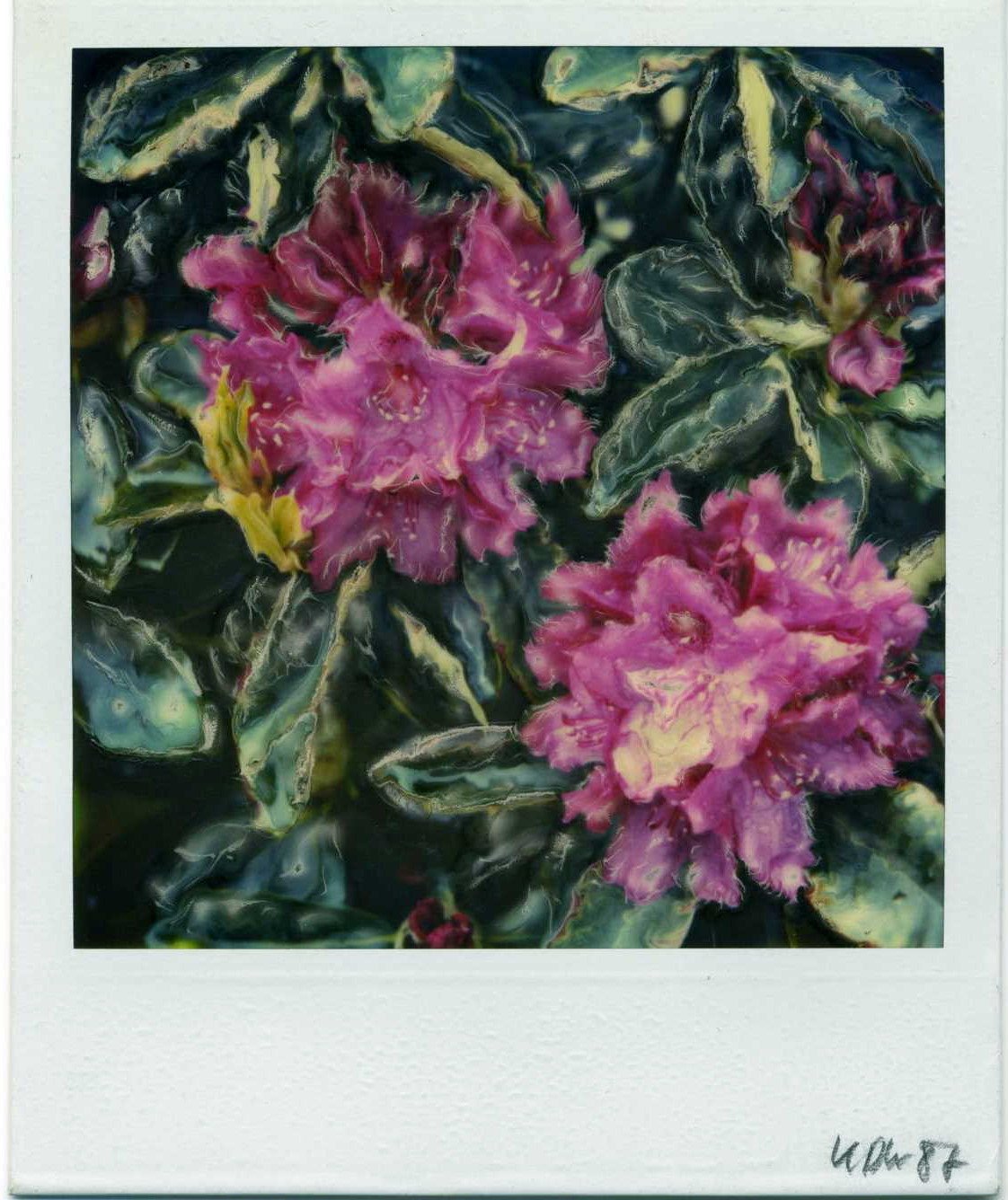The Polaroid SX-70 camera and its associated film (produced before 2008) are known for their unique characteristics and the creative possibilities they offer for image manipulation. The SX-70 film is an integral film, meaning it contains all the necessary chemicals for development within the film pack itself. This allows for immediate development and viewing of the photograph.
What happens during the impage development process?
Here’s how the SX-70 image manipulation technique works:
1. Exposure and Initial Development
When you take a photo with an SX-70 camera, the film is exposed to light, capturing the image. Immediately after exposure, the film is ejected from the camera, and the development process begins. The film contains a series of chemical layers that react to light and develop the image.
2. Chemical Reaction
The SX-70 film consists of several layers, including:
– Image-receiving layer: This is where the final image will appear.
– Negative layers: These contain the light-sensitive emulsion.
– Reagent: A pod of chemicals that is spread across the film when it is ejected from the camera.
When the film is ejected, rollers inside the camera spread the reagent evenly across the film, initiating the chemical reaction that develops the image.
3. Image Manipulation Techniques
The unique aspect of SX-70 film is that the development process can be manipulated to create artistic effects. Here are some key manipulation techniques:
a. Temperature Manipulation
– Cold Temperatures: Developing the film in cold temperatures can slow down the chemical reaction, resulting in softer, more pastel colors.
– Warm Temperatures: Developing the film in warm temperatures can speed up the chemical reaction, resulting in more vibrant and saturated colors.
b. Physical Manipulation
– Pressure: Applying pressure to the film during development can create distortions and unique textures. This can be done by pressing objects into the film or by bending and twisting the film.
– Scratching: Using a sharp object to scratch the surface of the film during development can create interesting patterns and lines.
The following video introduce the technique of SX70 manipulation, which shows editing Polaroid SX-70 photos in real time during the development process. The presenter shows various tools and techniques to create textures and colors, as well as to change the image through pressure and manipulation. Special emphasis is placed on the importance of timing the development process to achieve interesting effects.
4. Timing
The timing of these manipulations is crucial. Most manipulations are done within the first few minutes of the development process, as this is when the chemicals are most active and the image is still forming.
5. Final Image
After the manipulation, the film continues to develop, and the final image is revealed. The manipulations can result in a wide range of artistic effects, from soft, dreamy images to highly textured and abstract compositions.
6. Stabilization
Once the manipulation is complete, the film should be allowed to fully develop and stabilize. This usually takes a few minutes, after which the image is permanent.
Conclusion:
The Polaroid SX-70 image manipulation technique offers a unique blend of chemistry, timing, and creativity. By understanding the development process and experimenting with different manipulation techniques, photographers can create one-of-a-kind artistic images that are impossible to replicate with digital photography.













